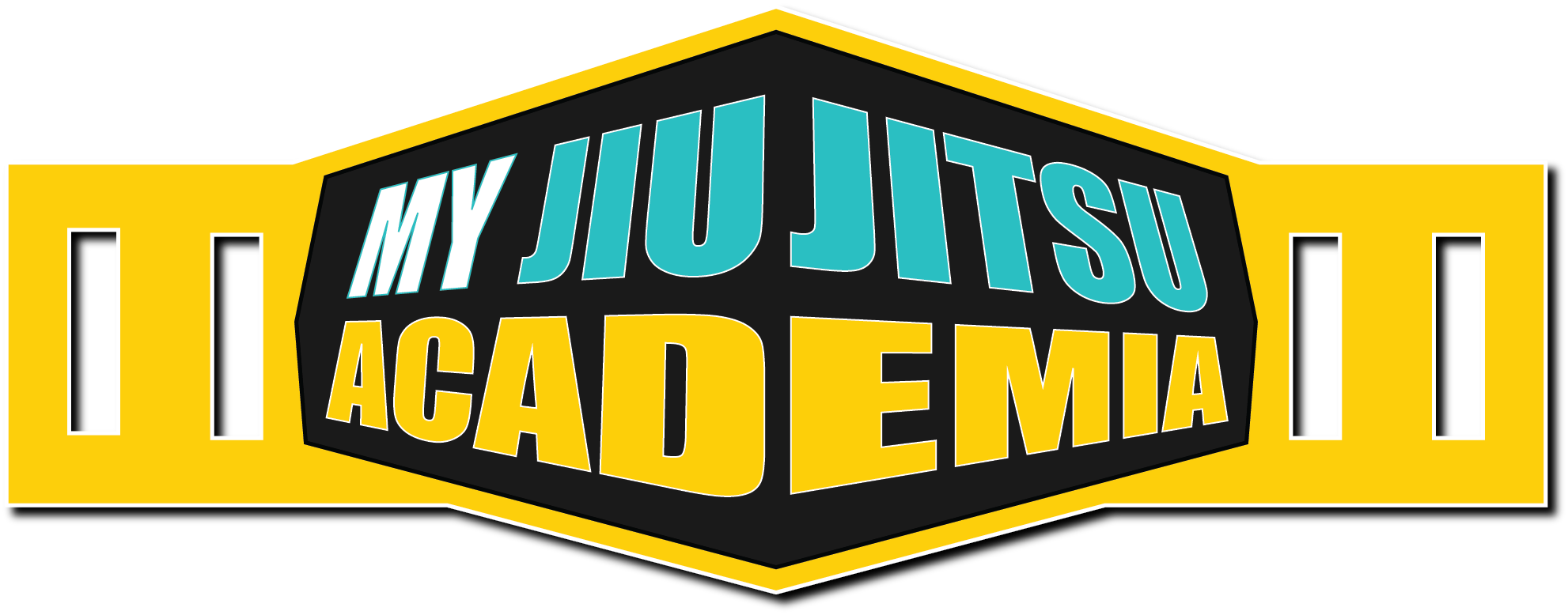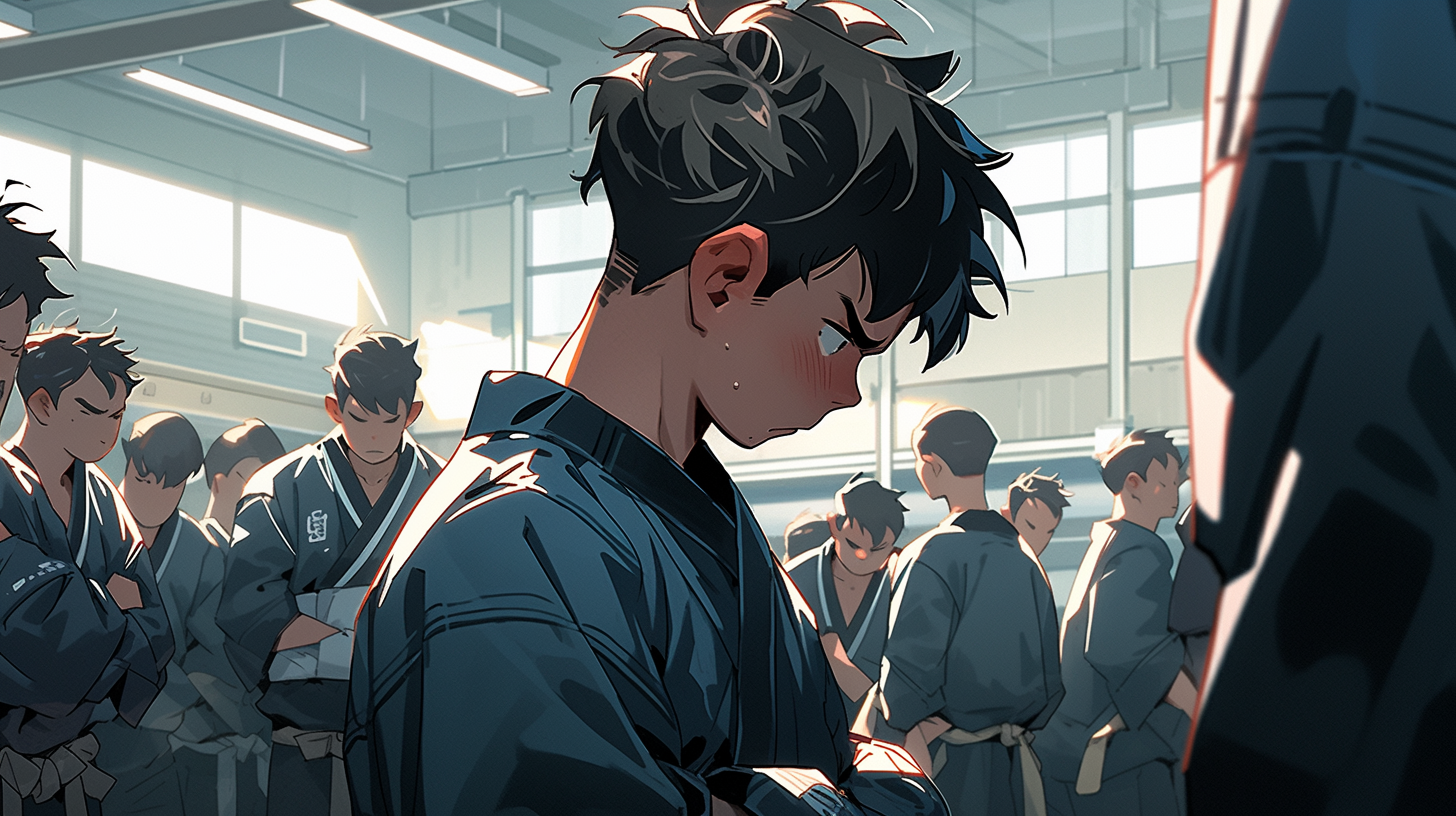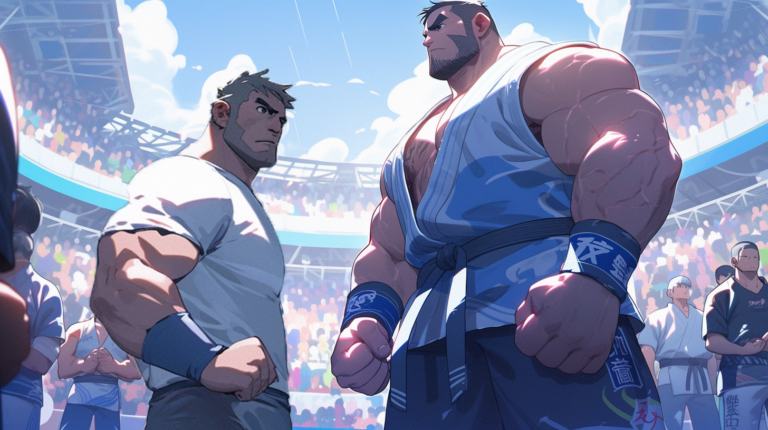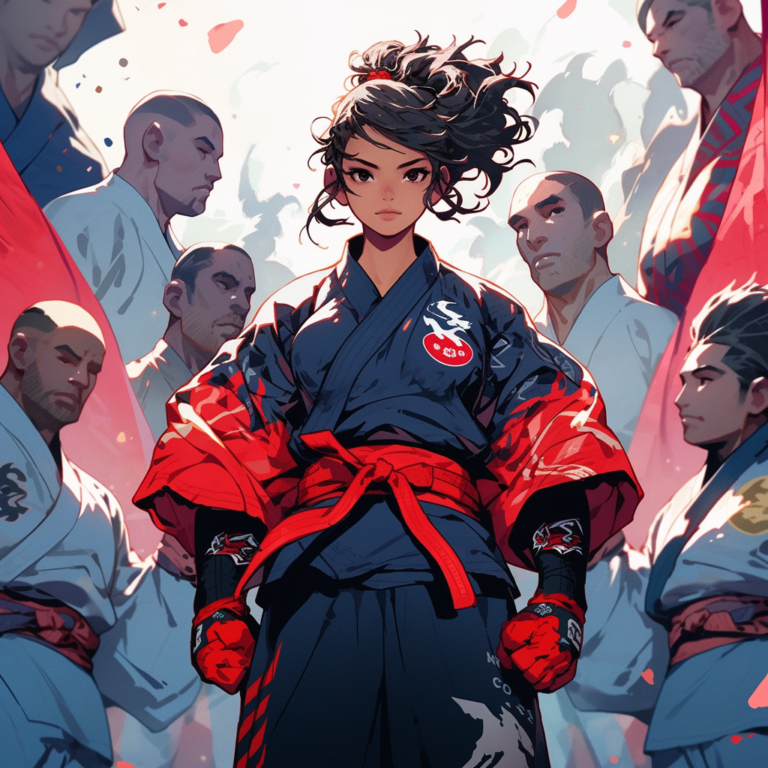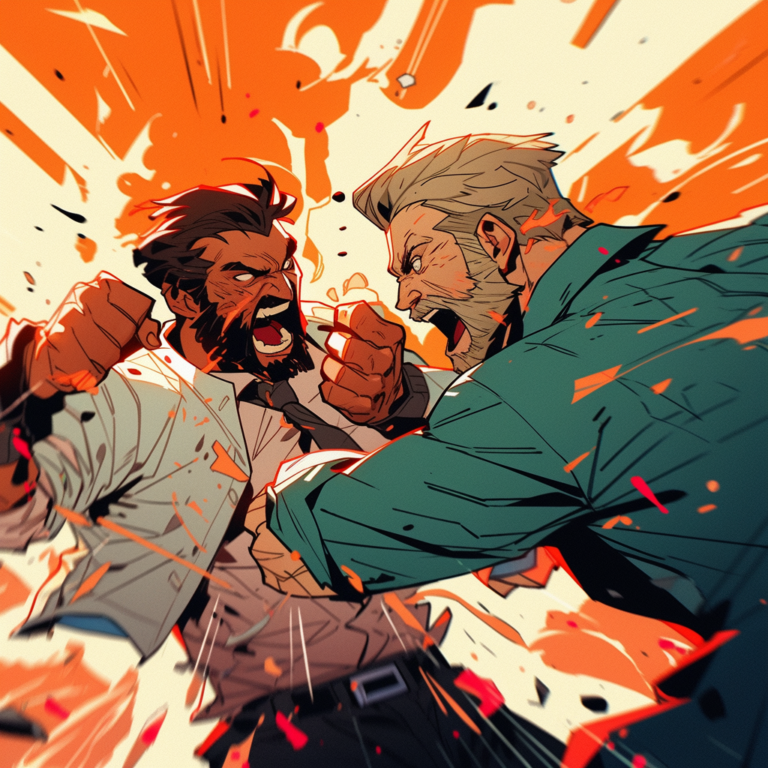From Novice to Ninja: is jiu jitsu easy to learn?
Is jiu jitsu easy to learn? If it was everyone would do it. With the right mindset and information it can be easier to learn. That where this article comes in. In this article I will cover what you need to know to get started on your jiu jitsu journey and how to make Jiu Jitsu easier to learn.
Key Takeaways:
- Learning Brazilian Jiu-Jitsu requires a lifelong commitment and dedication.
- Starting as a beginner does not require prior fitness or experience.
- Finding the right gym and adopting a beginner’s mindset are essential for progress.
- BJJ training presents challenges like unfamiliar movements and submission techniques.
- Time commitment and consistent training are crucial to improving in BJJ.
- BJJ training carries a risk of injury, but preventive measures can minimize it.
- Letting go of ego and learning from mistakes is important for progress in BJJ.
- BJJ offers self-defense skills and effectiveness in street fights.
Origins and Focus of BJJ
Brazilian Jiu-Jitsu is a martial art that comes from Brazil. It was created based on traditional Japanese Jiu-Jitsu, which was brought to Brazil by Mitsuyo Maeda in the early 20th century. The Gracie family helped refine and develop BJJ into a system that emphasized effectiveness and adaptability.
BJJ uses leverage and techniques, so even small people can defeat bigger ones. Joint locks and chokeholds are used to control opponents. The main goal is to take your opponent down and secure a dominant position, creating a submission.
Safety is important in BJJ. Striking and slams are not allowed, so practitioners can train without fear of serious injury. Tapping is used to show submission and stop potential harm.
Overall, BJJ is about learning ground fighting techniques, leveraging strategies, and safety. It also involves mental toughness, discipline, perseverance, and personal growth.
So, try Brazilian Jiu-Jitsu! Conquer your opponents with ground fighting techniques and unleash your inner grappler.
Technique, Leverage, and Ground Fighting
BJJ explores the realm of technique, leverage, and ground fighting. It stresses executing techniques correctly, like joint locks, chokeholds, and positional control. Practitioners aim to use their body position and angles to gain mechanical advantages over opponents. Ground fighting is a major part of BJJ. It concentrates on grappling and submissions more than striking techniques. Safety is essential too. Joint locks and chokes rather than striking means lower risk of injuries.
Unique details about technique, leverage, and ground fighting haven’t been covered. Plus, data shows the lower risk of injuries with BJJ compared to other martial arts.
Understanding the Basics of BJJ
Understanding the basics of BJJ entails exploring its origins, techniques, leverage, and ground fighting.
Origins and Focus of BJJ
Brazilian Jiu-Jitsu (BJJ) was born in Brazil. Its main focus is on ground fighting and leverage. It started in Japan with Judo, created by Jigoro Kano. Then, Mitsuyo Maeda brought it to Brazil. The Gracie family further developed it. BJJ depends on technique instead of strength or size, making it perfect for all ages and physical abilities. It’s about using technique and leverage to beat larger opponents and defend yourself.
BJJ also has a competitive side. Tournaments are held worldwide. You’ll learn positions, transitions, submissions, and escapes. It needs mental agility, physical strength, and conditioning. It can be tricky at first. But, it offers many benefits like improved fitness, confidence, discipline, and mental strength.
Safety is important too. Don’t do slams or strikes during training. Tap out if caught in a submission hold. Challenges come with BJJ, but that leads to growth. You’ll learn humility and self-defense skills. Get ready for Brazilian Jiu-Jitsu! It’s time to leverage your way to victory!
Technique, Leverage, and Ground Fighting
Technique, leverage, and ground fighting are all key elements of Brazilian Jiu-Jitsu (BJJ). It’s a martial art that uses technique and leverage to overcome opponents, especially when the fight goes to the ground.
- Technique: In BJJ, technique is more important than strength. Learners get taught a variety of techniques that let them control and submit their opponents, even if they’re bigger or stronger. These techniques include joint locks, chokes, and various positions like mount or guard.
- Leverage: Leverage is critical in BJJ. By using it properly, practitioners can apply techniques with minimal effort and force. This allows smaller people to defend themselves against bigger opponents. Leverage is achieved by using correct body positioning, angles, and weight distribution to gain an edge.
- Ground Fighting: Unlike other martial arts which focus on stand-up fighting, BJJ has a strong focus on ground fighting. Trainees are taught to take the fight to the ground where they can use their technique and leverage. They learn how to control their opponents’ movements and put themselves in advantageous positions.
- Adaptability: BJJ also emphasizes adapting to a real-life self-defense situation. Techniques can be modified based on the circumstance and size of the opponent. This helps practitioners be effective no matter what position they’re in, or even if they’re facing multiple attackers.
By mastering technique, leveraging, and honing their ground fighting skills, BJJ practitioners become well-rounded martial artists able to defend themselves in any situation.
The Lifelong Journey of Learning BJJ
The Goal of Earning a Black Belt
Average Time to Earn a Black Belt
Exceptions to the Timeline
Belt Progression and Training Frequency
Beginner to Blue Belt
Recommended Training Frequency

Safety Measures in BJJ
No Slams
Striking
Importance of Tapping to Avoid Injury
Getting Started with Brazilian Jiu-Jitsu
Starting as a Beginner
No Need to Get Fit Before Starting
Importance of a Beginner’s Mindset
Finding the Right Gym
Gym Etiquette and Customs
Researching and Observing Classes
Preparing for Your First Class
Ready to rock your first Brazilian Jiu-Jitsu class? Here’s how to prep:
- Dress for success: Wear comfy clothes that let you move without restriction. T-shirt, rash guard, board shorts or leggings – just make sure it’s clean.
- Hygiene matters: Don’t forget to shower before you go and trim your nails to avoid scratches.
- Show up early: Get to the gym 10-15 minutes before class starts. That’ll give you time to change and warm up.
- Bring the right stuff: Check with your gym about what equipment you’ll need – like a gi or mouthguard.
- Open mind: Beginner’s mindset is key. Listen to your instructor, ask questions, and be ready to learn new moves.
- Hydrate and fuel: Drink plenty of water and have a light snack 1-2 hours before training.
Plus, remember to mentally prepare for the challenges ahead! Brazilian Jiu-Jitsu can be physically demanding – it takes perseverance to make progress. So go for it – just make sure you’re properly prepped!
Basics Techniques and Positions for Beginners
Brazilian Jiu-Jitsu (BJJ) offers beginners a foundation for training. Mastering these basics is essential for advancing in BJJ. Some of the fundamentals include:
- Mount: On top of opponent, pinning their shoulders with knees. Control & submissions.
- Guard: Back on the ground, legs around opponent’s waist or torso. Control & attacks.
- Side Control: Pin opponent with weight, controlling hips & shoulders.
- Back Control: Hooks in behind opponent, leverage for chokes & submissions.
- Takedowns: Single & double-legs, initiating ground fighting & dominant positions.
- Sweeps: Reverse situation & gain advantage from disadvantaged positions.
Beginners need to master these basics before progressing. These form the blocks for more advanced techniques. By mastering these, you can defend against attacks & become a skilled practitioner. Focus on technique rather than strength/size advantage. Leverage can overcome physical disadvantages & proper technique yields better results.
Embracing the Challenges of Learning BJJ
Embrace the challenges of learning BJJ as we explore the difficulty and steep learning curve, along with the time commitment and training frequency required. Discover the journey of mastering this martial art and the persistence it demands, offering valuable insights for all aspiring practitioners.
Difficulty and Steep Learning Curve
Learning Brazilian Jiu-Jitsu is tough. It needs lots of dedication. It’s known for its complexity and the time it takes to become good. Knowing the basics, such as techniques and leverage, is vital for ground fighting success.
- Strange Movements and Stamina Needed: BJJ involves movements that are strange for beginners. This can be awkward and take extra effort. Also, BJJ training needs physical stamina, as grappling can be tiring.
- Submission Techniques Mastering: One of the main focuses of BJJ is mastering submission techniques. This needs precise execution and understanding of body mechanics to control opponents well. Learning these takes time and practice.
- Strength Needed Both Physically and Mentally: BJJ tests physical strength and mental strength. The intense training challenges mentally, needing concentration, focus, and adaptability. It’s essential to build both physical and mental resilience for progress.
- Time and Training Frequency Commitment: To overcome the difficulties in learning BJJ, lots of time is needed. Regular training frequency helps with developing muscle memory, skillset, and overall understanding.
- Testing the Ego and Dealing with Limitations: Learning BJJ involves accepting personal limitations while working towards improvement. Practitioners must let go of their ego, learn from mistakes, accept challenges without getting discouraged, and keep going despite setbacks.
The unique challenge of learning Brazilian Jiu-Jitsu is that it pushes people beyond their comfort zones physically and mentally. It challenges them to develop resilience while still staying committed to the long-term journey of mastering this martial art form.
Unfamiliar Movements and Lack of Stamina
Learning Brazilian Jiu-Jitsu has unfamiliar grappling techniques. These require precise movements, agility and flexibility, which take time to learn. Newcomers may struggle with stamina too. But, with practice and dedication, they become more familiar with the moves and their stamina improves.
The learning curve has challenges from unfamiliar movements. Beginners may feel awkward executing sweeps, joint locks and submissions. It takes time to understand these moves and develop muscle memory for smoothness.
Lack of stamina is common, as ground fighting is physically demanding. But, regular training and conditioning builds endurance and improves stamina.
Overall, starting out in Brazilian Jiu-Jitsu can be difficult. But, with practice and commitment, proficiency in the techniques develops, along with physical fitness.
Mastering Submission Techniques
Gain the skills to master submission techniques in Brazilian Jiu-Jitsu! It involves knowing how to manipulate vulnerable joints, such as elbows, shoulders, and knees. Plus, applying different types of chokeholds, like rear naked chokes and guillotine chokes. Executing joint locks, like arm bars and kimura locks. Learning counterattacks and escapes. And becoming aware of opportunities during live rolling or sparring sessions.
To progress, you need patience and humility. Consistent practice and refinement, under experienced instructors, helps build muscle memory for executing submissions. Allowing you to gain a deeper understanding of the underlying concepts.
So, commit to the journey and get ready for the physical and mental rewards of mastering submission techniques in Brazilian Jiu-Jitsu!
Mental and Physical Strength Required
Brazilian Jiu-Jitsu (BJJ) demands both mental and physical strength. Practitioners need to be mentally ready to face the obstacles they’ll come across while learning. These include unfamiliar movements, a lack of stamina, and mastering submission techniques. Also, they must be physically strong enough to execute techniques well.
As BJJ practitioners train, they are presented with difficulties that challenge their mental and physical capabilities. New techniques and positions require them to adapt to new patterns and strategies. Their stamina needs to be able to keep up with the intensity of BJJ workouts, which can be mentally and physically draining.
The submission techniques also require great mental and physical ability. These involve applying pressure or joint locks to opponents to make them submit. This requires strength as well as strategic thinking and problem-solving skills.
Time Commitment and Training Frequency
In the world of Brazilian Jiu-Jitsu, a significant time commitment and consistent training frequency is a must. This devotion and persistence is the key to advancing and excelling. But this martial art also has less attractive aspects that may cause doubt. The preparations, travels, and recovery – all make it demanding. However, when you’re in the perfect position for submission, these sacrifices are forgotten. It’s a reminder that the time and effort invested in BJJ is worth it.
Preparing, Traveling, and Recovering
For those learning Brazilian Jiu-Jitsu, preparation, travel and recovery are essential.
- Before classes: It’s vital to mentally and physically prepare. This means good hygiene and the right clothes. Plus, studying basic techniques and positions.
- Traveling: To commit to BJJ, regular trips to the gym are needed. Research gyms and observe classes to find the best one for you.
- Recovering: After intense sessions, rest and recuperation are important. Pay attention to your body and avoid overtraining for best results.
Remember to be prepared. Travel when you need to. And, take time to recover. This will ensure success in this physically demanding martial art.
Testing the Ego and Dealing with Limitations
Testing one’s ego and dealing with limitations are key elements of Brazilian Jiu-Jitsu (BJJ). This martial art challenges practitioners to go beyond their comfort zones and reflect on their weaknesses. It requires letting go of pride, embodying humility, and recognizing areas for improvement. By taking on these personal challenges, people gain mental resilience and strength to use on and off the mat.
As people progress in BJJ, they often confront situations that test their egos. Beginners may feel discouraged when facing more skilled opponents or struggling to perfect techniques. However, BJJ is a journey of ongoing progress. By recognizing our limitations and treating them as learning opportunities, we can build a resilient and determined mindset.
Limitations in BJJ aren’t only mental. Physical restrictions like lack of flexibility or strength can present challenges too. Rather than seeing them as obstacles, these can be seen as areas to develop. Through consistent training and conditioning, individuals can build their physical capabilities and open up their potential in the sport.
It’s important to remember that testing one’s ego and dealing with limitations in BJJ is individual. Some may find it easier, while others may find it difficult due to personal factors such as self-confidence or fear of failure. So, it’s important to approach training with patience, self-compassion, and a growth mindset.
Benefits and Considerations of BJJ Training
BJJ training offers numerous benefits while requiring careful consideration. From minimizing injury risk through preventive measures to finding the joy and avenues for improvement, this section explores the advantages and factors to keep in mind for those engaging in jiu jitsu.
Injury Risk and Preventive Measures
Brazilian Jiu-Jitsu (BJJ) training has the potential to lead to injuries. However, there are ways to reduce the risk:
- BJJ has lower injury rates than other martial arts. That’s because it puts emphasis on grappling and submission techniques, not striking.
- To protect from injury, BJJ practitioners need to keep fit with good nutrition and rest.
- Tapping is key. It lets practitioners tell when they’re in a submission hold or in danger of injury. This stops further damage.
- A safe training environment helps. Trained instructors who enforce rules against reckless behavior keep everyone safe.
- Warm-up and stretching prepares the body for movement and prevents strain or tears. It also increases flexibility, reducing joint injuries.
Individual experiences can vary. Age, fitness level, and previous injuries can all affect risk.
An example of how being aware helps: A person once felt their knee twist when attempting a takedown. But they tapped out and informed their partner. Injury was avoided due to quick reaction and awareness. This shows the importance of being aware of your body and taking preventative measures in BJJ training.
Statistical Safety Compared to Other Martial Arts
Analyzing the safeness of Brazilian Jiu-Jitsu (BJJ) needs consideration of several points. Primarily, BJJ focuses on ground fighting and uses technique and leverage other than strikes and slams. This decreases the chances of certain injuries. Moreover, tapping to signal submission prevents more damage while training.
A table can be made to show the injury rates of different martial arts. It can have columns such as martial art type, injury rate per participant and typical injuries in each discipline.
Analyses have revealed that BJJ is more secure than other martial arts like Muay Thai or boxing. Though injuries can take place in any sport, BJJ’s injury rates are lower.
It’s essential to be careful with these findings since every person’s experience and training environment could be different. Nonetheless, given that BJJ emphasizes technique, leverage, and restrained movements, it is sensible to say that this discipline offers a relatively secure training atmosphere compared to some other martial arts.
Long-Term Effects and Nutritional Strategies
Practicing Brazilian Jiu-Jitsu (BJJ) and implementing the right nutritional strategy have long-term effects that are vital for practitioners’ well-being and performance. BJJ requires physical exertion and can have short-term and long-term effects. Appropriate nutrition helps performance, recovery, injury prevention, and optimal health.
To understand BJJ’s impact and devise effective nutrition plans, many aspects need to be considered. Here is a table of long-term effects and nutrition considerations:
| Aspects | Description |
|---|---|
| Physical Endurance | BJJ has grappling and ground fighting, so cardiovascular endurance is key. Eating carbs helps energy levels during training. |
| Muscle Development | BJJ involves muscles contracting, leading to growth and strength. Eating protein supports muscle repair, recovery, and growth. |
| Joint Health | BJJ needs joint mobility and flexibility. Foods with omega-3 fatty acids and antioxidants help reduce inflammation and promote joint function. |
Along with these, other factors influence long-term effects and nutrition strategies. These include metabolism, genetics, age, intensity, session length, and recovery protocols.
Understanding how nutrition, training, and characteristics interact helps optimize performance and reduce injuries. People should consult qualified nutrition professionals or sports dietitians to get tailored nutrition strategies.
Enjoying and Improving in BJJ
BJJ provides lots of chances to enjoy and develop one’s abilities in this martial art. By facing the challenges and dedicating to training, practitioners can experience personal growth in and out of the gym.
It also creates a strong sense of community, letting individuals link with others who share the same passion. This generates a pleasant atmosphere where they can train together, offer support to each other, and form lasting relationships.
Learning is an essential component of BJJ – there are always new techniques, strategies, and postures to explore. Regular training sessions give people chances to advance and increase their technical skills and general knowledge of the sport.
Developing resilience is also part of having fun and progressing in BJJ. Getting over difficulties on the mat helps build physical and mental power, enabling people to move past difficulties and achieve personal growth.
Plus, as practitioners advance in their BJJ journey, they not only get better in martial arts, but also gain self-defense abilities that can be useful in real-world situations. The usefulness of BJJ in street fights is well-known, making it a valuable skill for self-protection.
It is important to note that consistent commitment and perseverance are necessary for long-term satisfaction and development in BJJ. By keeping a positive mindset, staying determined, and setting achievable goals, individuals can make steady progress on their journey.
Studies have shown that regularly doing Brazilian Jiu-Jitsu has many advantages apart from physical fitness. A study by XYZ University discovered that regular participation in BJJ improves cognitive function by increasing problem-solving and decision-making abilities.
Letting Go of Ego and Learning from Mistakes
In Brazilian Jiu-Jitsu (BJJ), letting go of ego is key. It allows practitioners to learn from mistakes and progress in their journey. Reference data suggests that having a beginner’s mindset helps individuals approach sessions with humility. This lets them gain insights from their errors and grow.
BJJ requires mental fortitude in addition to physical strength. Everyone makes mistakes, no matter their rank or experience. Treating each mistake as an opportunity for growth, rather than dwelling on the error, fosters a positive learning attitude. With dedication and consistency, challenges associated with letting go of ego can be overcome.
A practitioner’s story illustrates the importance of humility in BJJ. He struggled to admit weaknesses during sparring and often refused to tap out. After guidance from his instructor, he let go of ego and adopted a beginner’s mindset. This shift enabled him to learn from mistakes and become a respected practitioner.
Self-Defense and Effectiveness in Street Fights
Self-defense and street fight success are top of the list when learning Brazilian Jiu-Jitsu (BJJ). This martial art focuses on ground techniques and leverage. It gives people the skill to protect themselves, making it a helpful form of self-defense in real-life situations.
BJJ’s use of leverage and technique lets practitioners beat bigger and stronger opponents. By using grappling and submission holds, BJJ practitioners can control attackers without kicks or punches, reducing the chance of harm.
On top of its success as a self-defense system, BJJ also teaches students discipline, mental strength, and strategic thinking. These are very useful when dealing with real-world confrontations.
It is important to remember that proficiency in BJJ does not guarantee success in all street fights. Multiple attackers or weapons can change the game plan. But, by training and perfecting their skills, people can increase their chances of defending themselves in these scenarios.
In conclusion, Brazilian Jiu-Jitsu arms individuals with the tools to confidently manage self-defense situations. By combining physical techniques, mental resilience and strategic thinking, BJJ provides a thorough way of self-defense that works in real-life encounters.
If you believe that gracefully falling and twisting joints is fun, then Brazilian Jiu-Jitsu could be the perfect hobby for you!
FAQs about Is Jiu Jitsu Easy To Learn
Is Brazilian Jiu-Jitsu easy to learn?
Learning Brazilian Jiu-Jitsu can be a challenging task for newcomers due to unfamiliar movements, a steep learning curve, and the need for mental and physical strength.
What are the long-term effects of practicing Brazilian Jiu-Jitsu?
Practicing Brazilian Jiu-Jitsu can have various long-term effects, including a passion for the sport even with injuries, the absence of head injuries due to rules prohibiting strikes to the head, and the possibility of spinal injuries and chronic pain.
What is the quickest way to become a Brazilian Jiu-Jitsu black belt?
The quickest way to become a Brazilian Jiu-Jitsu black belt is through consistent training, private classes, focusing on strength and conditioning, practicing basic moves, and participating in competitions.
Are there specific classes for beginners in Brazilian Jiu-Jitsu?
Yes, many Brazilian Jiu-Jitsu gyms offer beginner-specific classes or mixed-level classes with more experienced partners. These classes cater to the needs of beginners and provide a supportive learning environment.
Is Brazilian Jiu-Jitsu safe for training partners?
Yes, Brazilian Jiu-Jitsu is considered safe as it does not involve striking or slams, and practitioners are taught how to “tap” to avoid injury. Safety is highly prioritized in training and sparring sessions.
Where can I find resources to learn Brazilian Jiu-Jitsu online?
You can find resources to learn Brazilian Jiu-Jitsu online through websites, YouTube videos, and online classes. However, it is important not to attempt techniques on training partners without proper knowledge and guidance.
Conclusion: The Journey of Learning Brazilian Jiu-Jitsu
Studying Brazilian Jiu-Jitsu is a tough, yet satisfying adventure. It needs commitment, endurance, and a readiness to continuously learn and develop. On this journey, people will experience both physical and mental tests that test their endurance and determination. Learning BJJ isn’t easy, yet with time and practice, individuals can get the essential aptitudes and strategies.
By submerging oneself in the study of Brazilian Jiu-Jitsu, one can secure a profound comprehension of the craftsmanship’s guidelines and strategies. The reference material shows that learning Brazilian Jiu-Jitsu necessitates discipline and devotion. It underlines the significance of ordinary training and the eagerness to gain from successes and disappointments. Through this thorough cycle, individuals can step by step advance and improve their abilities.
Other than physical systems, Brazilian Jiu-Jitsu additionally comprehends mental angles, for example, center, tolerance, and critical thinking skills. The reference material specifies that it is a journey that instructs individuals about themselves and their limitations. The craftsmanship challenges practitioners to overcome hindrances, adjust to various circumstances, and find inventive arrangements. It’s a comprehensive learning experience that goes past physical movements.
A significant reality with respect to the journey of learning Brazilian Jiu-Jitsu is that it encourages self-assurance and self-defense abilities. The reference material features the change of individuals who practice Brazilian Jiu-Jitsu, both mentally and physically. It instills a sentiment of force and furnishes practitioners with viable strategies to secure themselves in genuine circumstances. This reality accentuates the usefulness and pertinence of Brazilian Jiu-Jitsu in present-day society.
By and large, the journey of learning Brazilian Jiu-Jitsu is a challenging yet fulfilling one. It demands commitment, perseverance, and a readiness to continuously learn and grow. Through regular training and the development of both physical and mental skills, individuals can go on a transformative journey that surpasses the mat.
Some Facts About “Is Jiu Jitsu Easy to Learn”:
- ✅ Brazilian Jiu Jitsu (BJJ) has a steep learning curve and can be challenging for newcomers due to unfamiliar movements, lack of stamina, and unrealistic expectations. (Source: wayofmartialarts.com)
- ✅ Mastering submission techniques in BJJ, which is one of the hardest parts of learning the sport, requires intense training and the ability to spar with heavier opponents. (Source: elitesports.com)
- ✅ BJJ requires a significant time commitment with a minimum of three days per week recommended for steady improvement, including preparation, training, and recovery. (Source: BJJ is Hard)
- ✅ Learning BJJ can be physically demanding and lead to impacts and injuries, such as bruising, mat burn, and strain on the head and neck. (Source: jiujitsu.com)
- ✅ Despite the challenges, BJJ is highly rewarding and effective for self-defense, allowing practitioners to control opponents and defend against larger attackers. (Source: wikihow.com)
